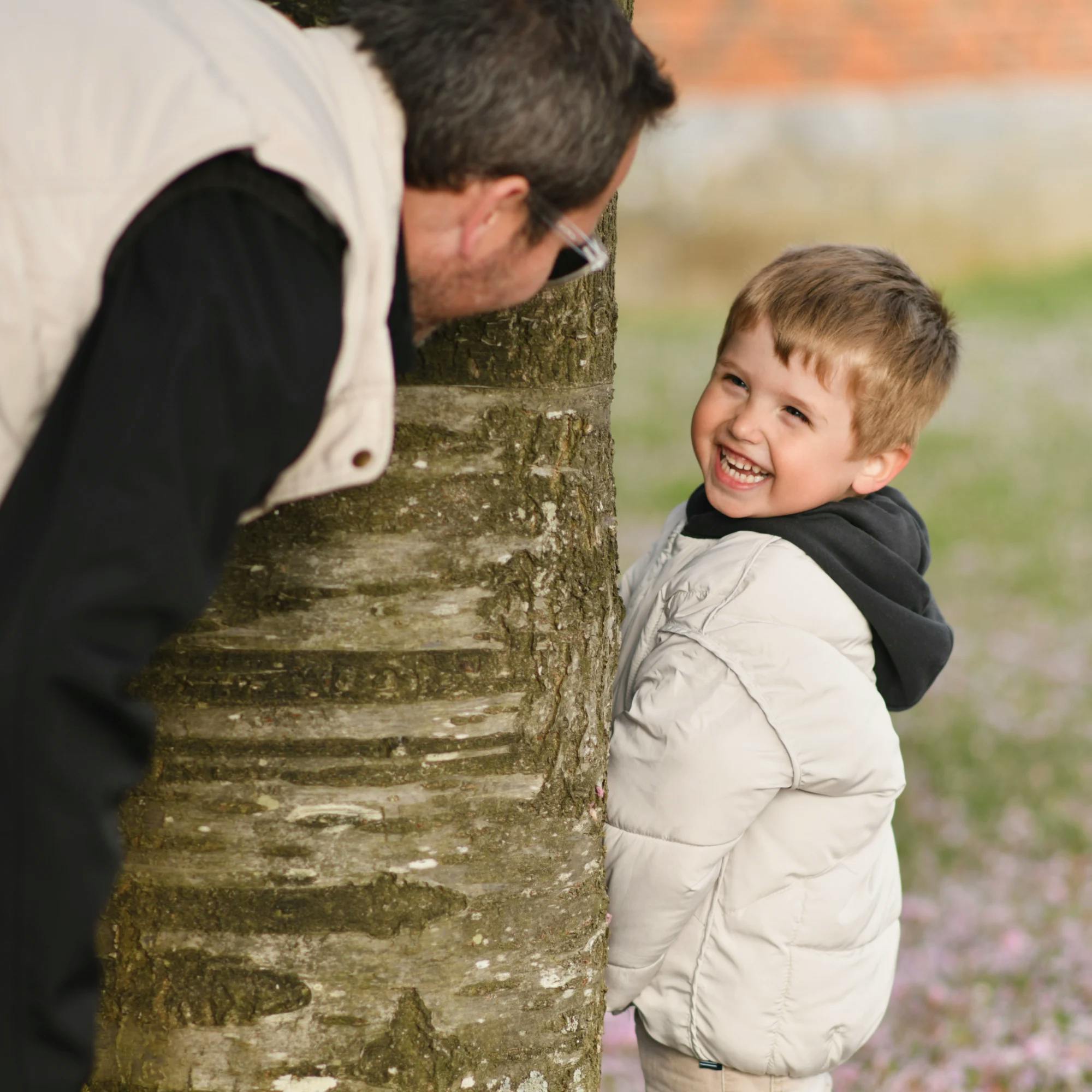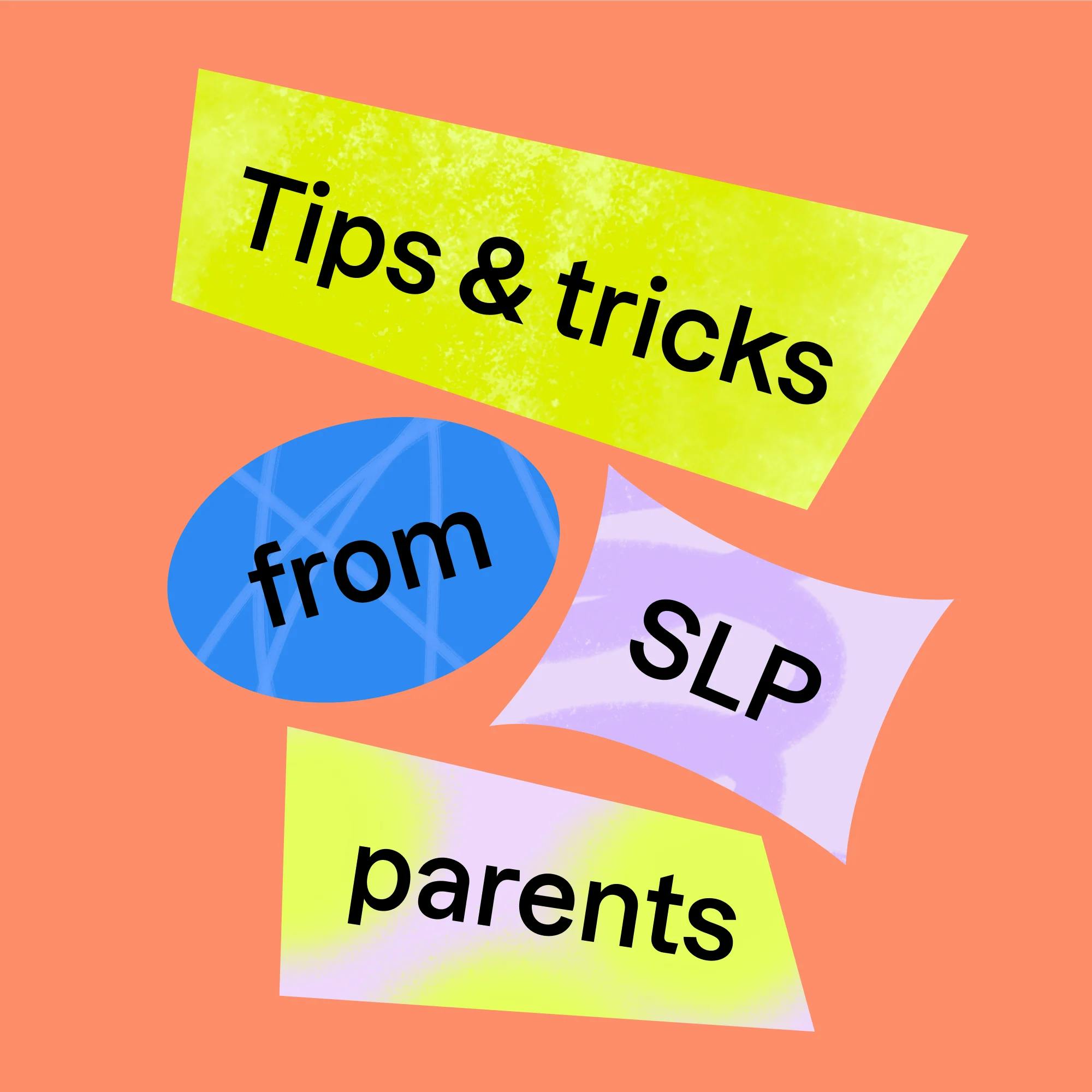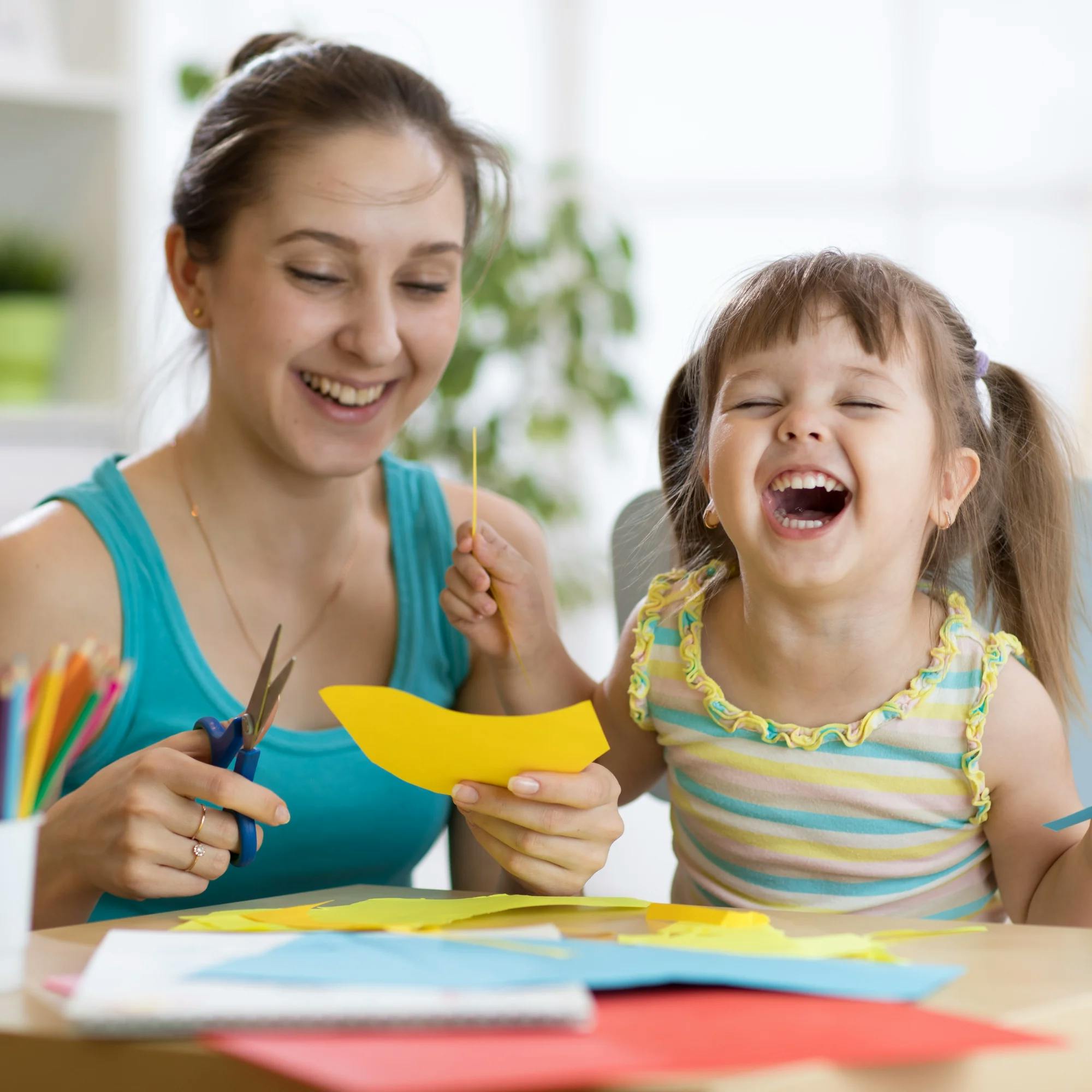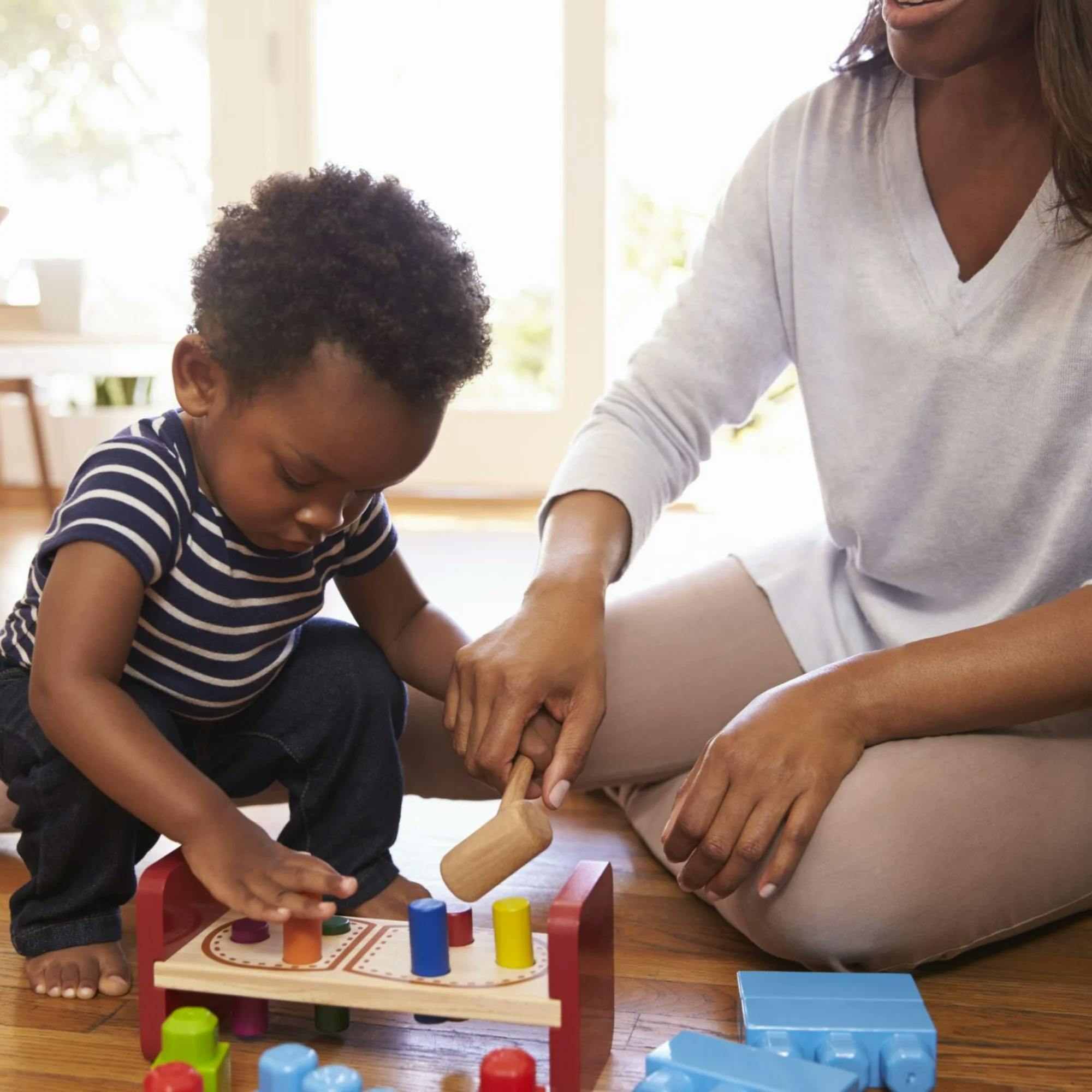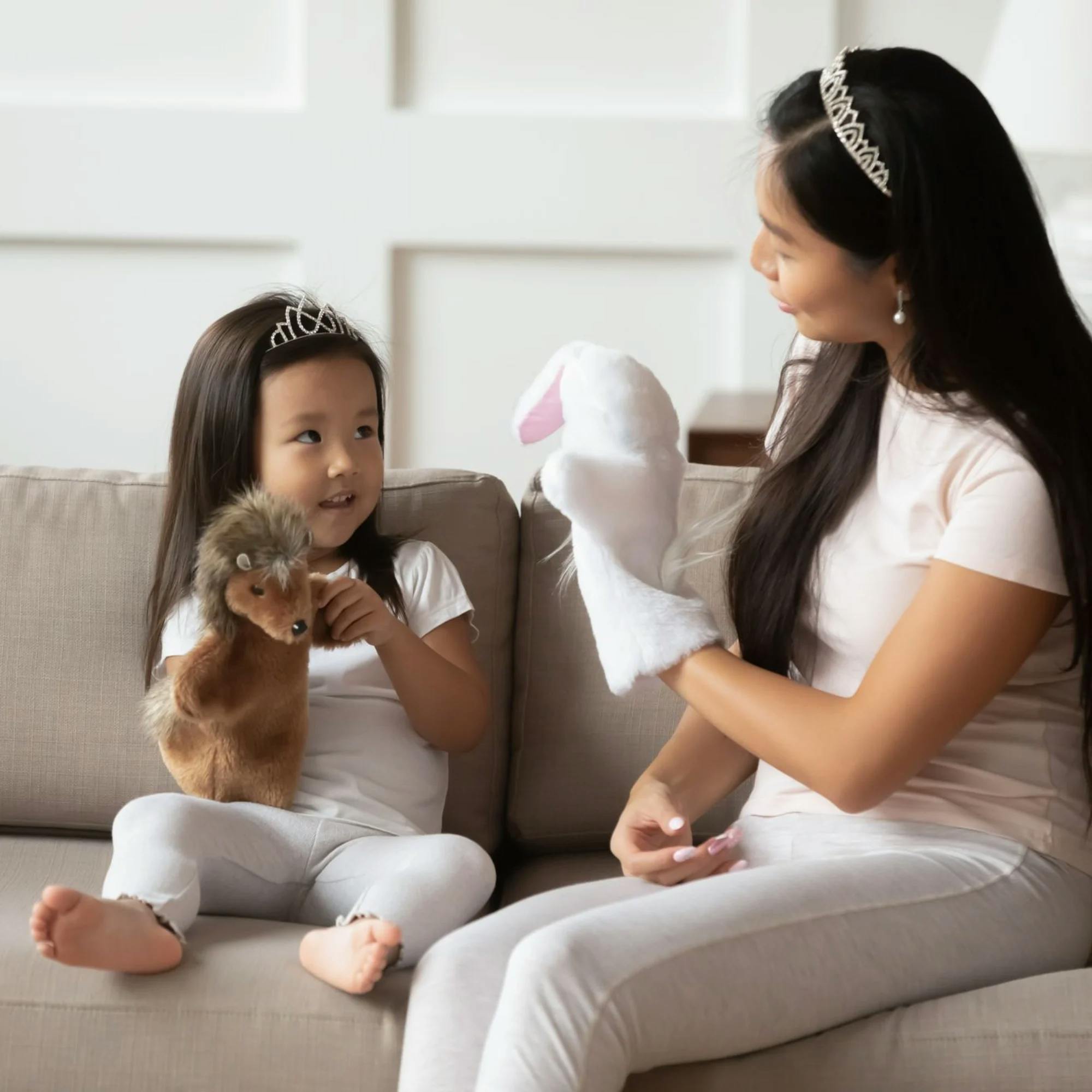To make progress with speech and language skills, regular practice is a must. But speech therapists know that practicing over and over can get tiring for kids. That’s why it’s important to keep practice fun.
One way to do that is to incorporate speech therapy tasks into games. Lots of games naturally promote speech and language skills, or can be slightly tweaked to work well during your child’s practice.
So what games help with speech? Let’s take a look at 11 fun games for kids of all ages and how our speech therapists recommend using them! We’ve got board games, games that use household items, and games that require nothing more than two people who are ready to play.

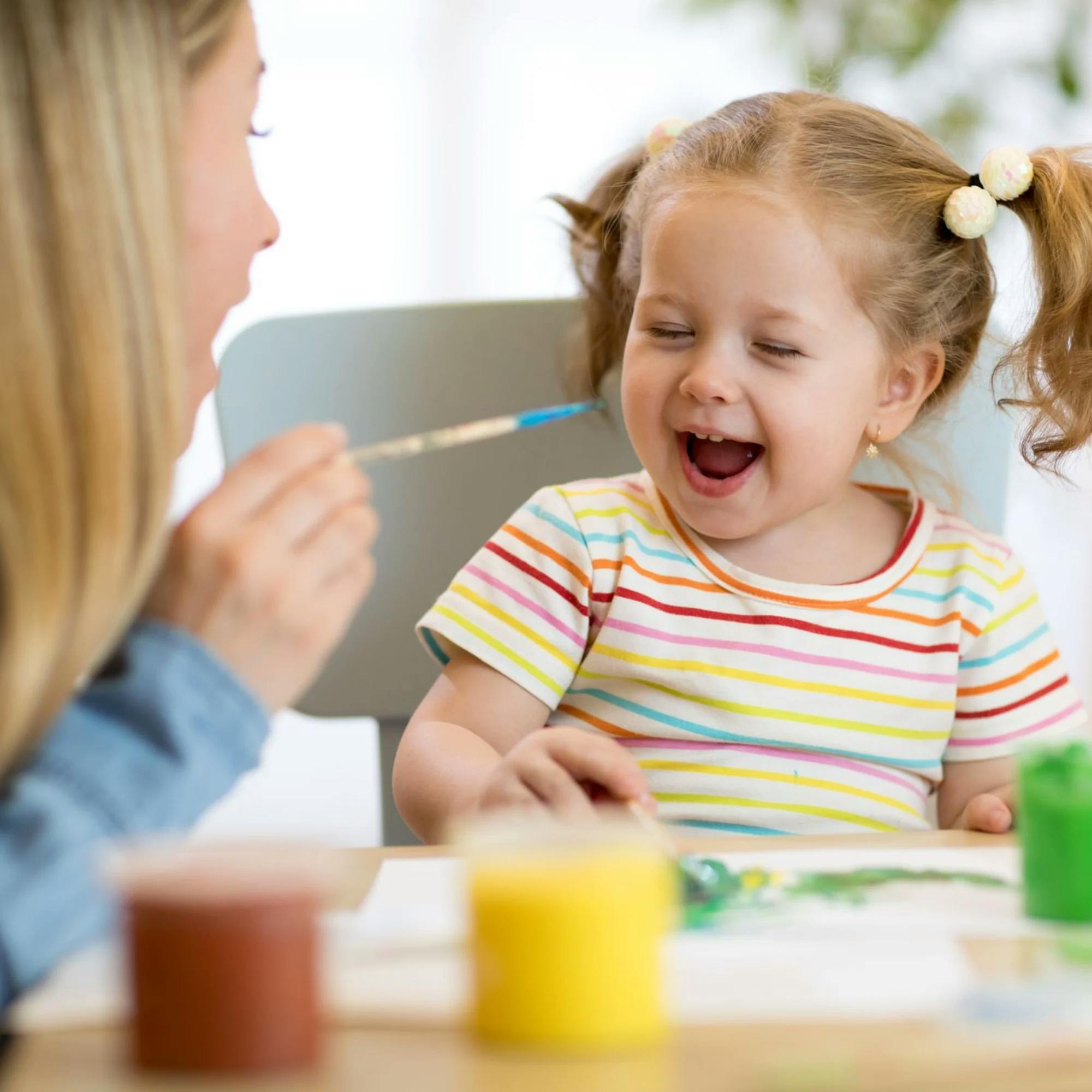
Speech therapy games for toddlers and young children
Seek-a-Boo
Andrea Inskip, M.S., CCC-SLP, one of our Expressable speech therapists, loves the game Seek-a-Boo for young kids ages 18 months and up. The game targets memory skills and vocabulary development. Andrea explains, “The child is given a ‘Find Me’ card and has to match it to a ‘Seek Me’ card. The cards are organized by categories of food, animals, clothes, shapes, colors, toys, and outdoor items.”
This game is played on the floor and promotes lots of movement while looking for the items. There’s plenty to talk about when you play, and the game can help children learn to use not only the words of the items in the pictures, but also related descriptive words or verbs.
Hide and seek
You know this one! Hide and seek is a great game for language skills. The repeated phrases “Ready or not” and “Here I come!” are helpful for kids learning new phrases, since they can practice these statements many times throughout the game.


Blindfolded “guess the item”
If your child is working on descriptive words, play a “guess the item” game. Grab lots of items with different textures and shapes. Some examples could be a hairbrush, Play-Doh, a blanket, and a fork. Each person takes a turn being blindfolded and touching the item that’s presented. They need to describe the item out loud, using adjectives, and guess what the item is!
I Spy
Games like I Spy are great for teaching colors and uses of items. Children can identify and name colors while playing this game–for example, “I spy something blue.” Similarly, if you say “I spy something that keeps you warm,” your child will have to determine the item used for that. They may guess a blanket or a jacket. When it’s their turn, they can describe the functions of objects as well. All these concepts are important skills to learn.
During I Spy, you can also work on articulation by choosing items that use your child’s target speech sounds. For example, if your child is working on the /s/ sound, they can play I Spy for items like a swing, a seat, or a sock.


Simon Says
Another classic! Simon Says helps a child learn to identify body parts–think “Touch your head” or “Touch your toes.”
You can also practice following one- or two-step directions. For example, “Stomp your feet” or “Stomp your feet, then turn around.” Watch to see if your child can follow the directions provided. (Try not to focus as much on whether they’re listening for the “Simon says” part!)


Charades
Charades are an opportunity to practice phrases and sentences, since kids need to speak in order to make guesses. Charades are also helpful for practicing joint attention, where people are focused on the same task together, as well as improving overall attention skills.
Speech therapy games for older kids
Scattergories
Scattergories is a fun game for older children and teens. Sarah Baldwin, M.A., CCC-SLP, explains, “Playing games like Scattergories with friends and family is a wonderful way to increase your child's language skills in several areas at the same time. For example, your child can be strengthening their phonemic awareness skills, their vocabulary skills, and their conversational skills all at the same time, and during a fun, motivating activity.”
Scattergories gives players a category that they need to list related words under. On top of that, these words have to start with a specific letter. So, for example, the players may need to list foods that start with the letter “b.”
This is a fun way to target vocabulary learning and word-finding abilities. The more you play, the faster your child will get with these tasks!
Two Truths and a Lie
This game is a hit with school-age kids. Each player has to say three statements, two that are true and one that’s false. The other player then guesses which is which.
You can target sentence structure abilities by telling your child to focus on certain types of sentences, like compound or complex sentences. Or your child can focus on grammar, such as verb tenses.
This is also a good game for inferencing, which is an important language skill. You can practice this by talking with your child about whether the statements make sense for something that person would or wouldn’t have done. You can be a little more obvious with your true and false statements in the beginning, if that helps your child.
If your child stutters, you can work on fluency skills during Two Truths and a Lie. Kids can use their stuttering techniques as they speak to practice increasing their overall fluency, or speech smoothness.

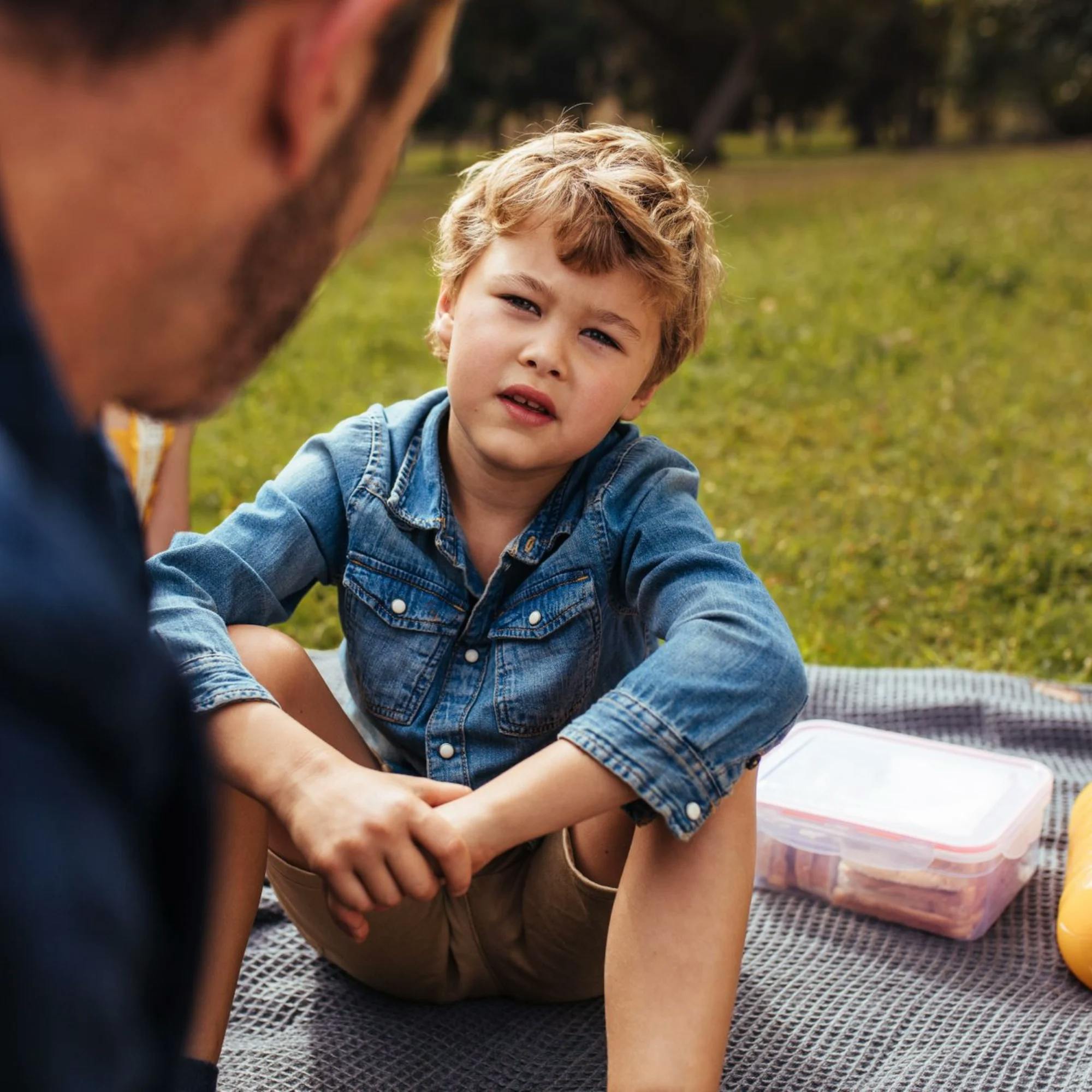
Headbanz
Headbanz offers plenty of chances for describing and categorizing. To play this game, each person takes a turn placing a picture on their head for the other person to see. The person “wearing” the picture doesn’t know what it is. They ask yes-or-no questions to try to guess the picture. These can be category questions, like “Is my picture a type of food?” or “Is my picture an animal?” Or they can be descriptive questions, like “Is my picture something big?” or “Is my picture something soft?”
Headbanz is a great game for not only understanding descriptive terms and categorization, but also expressing these terms. Guess Who? is a similar game that can be used in this way as well.
20 Questions/Would You Rather?
Conversational games like 20 Questions or Would You Rather? allow your child to target a variety of speech therapy goals. Both of these games require two people to engage in conversation and answer questions.
You can target social skills, such as taking turns while speaking, staying on topic, and using appropriate nonverbal communication to show good listening skills.
You can also target sentence structure, grammar, vocabulary usage, and articulation skills.


Charades
When playing charades with older kids, there are many ways to target speech and language skills. You can practice verbal problem-solving by talking together about whether a guess is a good one. You can also practice structuring questions correctly by asking things like, “Are you pretending to be a car?” or “Are you acting out grocery shopping?”
Turn-taking during any game is a natural way to practice social language skills. Turn-taking is easily used during charades, as each person has dedicated parts of the game to act out a word and then to guess.
Remember, when speech therapy practice is fun, kids will be more motivated to do it. And when they’re playing a game with family or friends, they’re building bonds and making memories at the same time. Ready, set, go!


 Abby Barnes, M.S., CCC-SLP
Abby Barnes, M.S., CCC-SLP